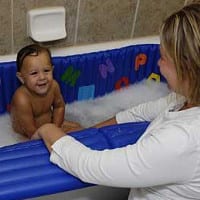Home Danger: Child Drowning
Drowning is the leading cause of unintentional death among children ages 1 to 4 years-old. The U.S. Consumer Product Safety Commission (CPSC) reports that it takes only a few inches of water for a young child to drown. It is very important to prevent this household danger of child drowning with supervision and care with water.
The Danger
From 2006 to 2010, there were 684 incidents involving children younger than five-years-old in household items such as bathtubs, buckets, bath seats, toilets, and landscaping features.This includes 434 drowning fatalities (an average of 87 per year), 233 injuries, and 17 incidents with no known injuries. Four out of five incidents happened in the bath.
ALSO READ: Keeping Baby Safe from the Start
Prevent drowning in your own home
Parents and caregivers need to look for and protect against drowning risks inside and around their homes.
ALSO READ: Splish, Splash in a Safe Baby Bath and Bathing Your Baby
“Too many young children are drowning,” said Chairman Inez Tenenbaum. “Just as with pools, I urge parents and caregivers to childproof their home and constantly supervise young children around bathtubs, bath seats and buckets. Taking extra safety steps at home can help prevent a tragic drowning.”
To prevent children drowning, the CPSC advises:
- Never leave young children alone near any water or tub or basin with fluid. Young children can drown in even small amounts of liquid.
- Always keep a young child within arm’s reach in a bathtub. If you must leave, take the child with you.
- Don’t leave a baby or young child in a bathtub under the care of another child.
- Never leave a bucket containing even a small amount of liquid unattended. Toddlers are top heavy and they can fall headfirst into buckets and drown. After using a bucket, always empty and store it where young children cannot reach it. Don’t leave buckets outside where they can collect rainwater.
- Consider placing locks on toilet seat covers in case a young child wanders into the bathroom.
- Learn CPR (cardiopulmonary resuscitation). It can be a lifesaver when seconds count.
Also read: Bath seats recalled due to drowning hazard






Comments are closed.